
DEFA was the state-owned film studio of the German Democratic Republic throughout the country's existence.

Frank Paul Beyer was a German film director. In East Germany he was one of the most important film directors, working for the state film monopoly DEFA and directed films that dealt mostly with the Nazi era and contemporary East Germany. His film Trace of Stones was banned for 20 years in 1966 by the ruling SED. His 1975 film Jacob the Liar was the only East German film ever nominated for an Academy Award. After the fall of the Berlin Wall in 1989 until his death he mostly directed television films.
Trümmerfilm was an aesthetic choice for those films made directly after World War II dealing with the impact of the battles in the countries at the center of the war. The style was mostly used by filmmakers in the rebuilding film industries of Eastern Europe, Italy and the former Nazi Germany. The style is characterized by its use of location exteriors among the "rubble" of bombed-down cities to bring the gritty, depressing reality of the lives of the civilian survivors in those early years.

Die Legende von Paul und Paula is a 1973 tragicomic East German film directed by Heiner Carow. A novel by Ulrich Plenzdorf named Die Legende vom Glück ohne Ende was based on this film.

Babelsberg Film Studio, located in Potsdam-Babelsberg outside Berlin, Germany, is the oldest large-scale film studio in the world, producing films since 1912. With a total area of about 460,000 square metres (5,000,000 sq ft) and a studio area of about 25,000 square metres (270,000 sq ft) it is one of Europe's large film studios.
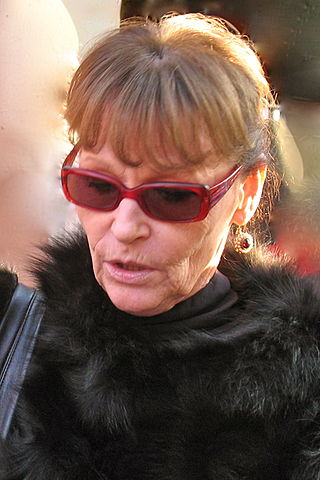
Angelica Domröse is a German actress, who became famous in the role of Paula in Heiner Carow's film The Legend of Paul and Paula. Her biological father was a prisoner of war from France.

Die Mörder sind unter uns, a German film known in English as Murderers Among Us in the United States or The Murderers Are Among Us in the United Kingdom was one of the first post-World War II German films and the first Trümmerfilm. It was produced in 1945/46 in the Althoff Studios in Babelsberg and the Jofa-Ateliers in Johannisthal. The film was written and directed by Wolfgang Staudte.

Rotation is a 1949 East German drama film directed by Wolfgang Staudte and starring Paul Esser, Irene Korb and Werner Peters. It was produced under the auspices of the DEFA film studio in East Germany. It began filming on 29 September 1948 and premiered in theaters on 16 September 1949.
Girls in Gingham —sometimes called Beaverskin—is a 1949 German drama film directed by Kurt Maetzig.
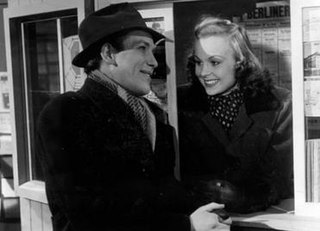
No Place for Love is a 1947 German comedy film directed by Hans Deppe and starring Bruni Löbel, Heinz Lausch and Ernst Legal. It was made in the Soviet Sector of Berlin by the state-controlled DEFA company. It is part of the post-war tradition of rubble films. Its plot revolves around the shortage of housing in the bombed-out city. It was shot at the Johannisthal Studios and on location around the city. The film's sets were designed by the art director Otto Erdmann and Kurt Herlth.
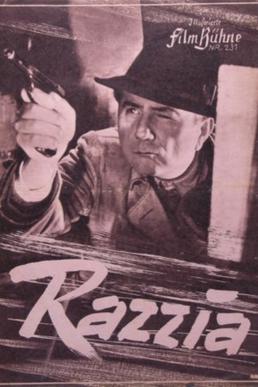
Raid is a 1947 German crime film directed by Werner Klingler and starring Paul Bildt, Agathe Poschmann, and Claus Holm. It was made as a cautionary tale about the black market in postwar Berlin.
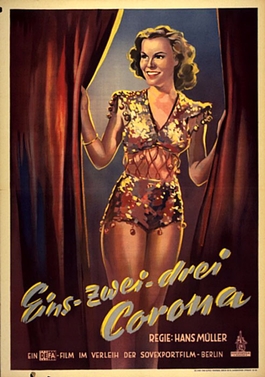
1-2-3 Corona is an East German film directed by Hans Müller. It was released in 1948.

Street Acquaintances is a 1948 German drama film directed by Peter Pewas and starring Gisela Trowe, Alice Treff and Ursula Voß. It was made by the Communist-controlled DEFA studios in the Soviet Zone of Germany Released in both the future West and East Germany it was a popular hit and sold 6,469,626 tickets. While it can be regarded as using a style that resembled the Italian neorealist films of the era, it has also been suggested that it returns to the more traditional style of the Weimar era. It portrays the dangers of spreading venereal disease.
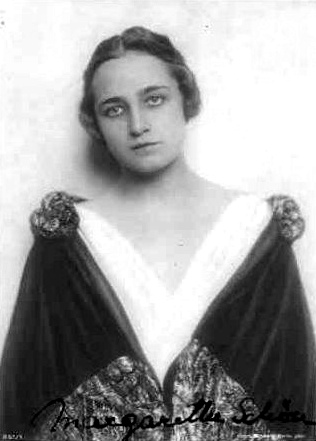
Margarete Schön was a German stage and film actress whose career spanned nearly fifty years. She is internationally recognized for her role as Kriemhild in director Fritz Lang's Die Nibelungen series of two silent fantasy films, Die Nibelungen: Siegfried and Nibelungen: Kriemhild's Revenge.
Käthe Braun was a German stage and film actress. She was married to director Falk Harnack and acted in several of his films.
Ralf Kirsten was a German film director and screenwriter. He directed 22 films between 1955 and 1986. His 1984 film Where Others Keep Silent was entered into the 14th Moscow International Film Festival.
![<i>Mutter Courage und ihre Kinder</i> (film) 1961 [[German Democratic Republic]] film](https://upload.wikimedia.org/wikipedia/commons/thumb/6/6b/Bundesarchiv_Bild_183-80357-0001%2C_Berlin%2C_Kino_%22OTL%22%2C_Nacht.jpg/320px-Bundesarchiv_Bild_183-80357-0001%2C_Berlin%2C_Kino_%22OTL%22%2C_Nacht.jpg)
Mutter Courage und ihre Kinder 1961 East German film produced by DEFA documenting the Berliner Ensemble staging of Bertolt Brecht's play of the same name. The play ran from 1959 to 1961, with Manfred Wekwerth and Peter Palitzsch directing, and stars Helene Weigel in the title role; it was modelled after the original 1949 production by Brecht and Erich Engel. The film received a prize at the Locarno Film Festival.
Manfred Richter was a German writer, scriptwriter and dramaturg.
Joachim Werzlau was a German pianist, radio consultant and composer. He belonged to the first generation of composers in the GDR, where he was also active in organisations and politics. As a pianist, he played for the theatre, for Mary Wigman's dance school, and a kabarett, among others. He composed popular songs, music for audio plays, film scores, incidental music, and three operas. With films such as Nackt unter Wölfen and Jakob der Lügner, he was the most popular film composer of the GDR of his time.
![<i>Sunday Drivers</i> (film) 1963 [[East Germany]] film](https://upload.wikimedia.org/wikipedia/en/0/05/Sonntagsfahrer.jpg)
Sonntagsfahrer is a 1963 East German comedy drama film directed by Gerhard Klein for the DEFA studio. The screenplay for the film was written by Wolfgang Kohlhaase and Georg Edel, and is about six disgruntled citizens of Leipzig who try to leave East Germany for West Berlin. It premiered on August 30, 1963, in Berlin.













![<i>Mutter Courage und ihre Kinder</i> (film) 1961 [[German Democratic Republic]] film](https://upload.wikimedia.org/wikipedia/commons/thumb/6/6b/Bundesarchiv_Bild_183-80357-0001%2C_Berlin%2C_Kino_%22OTL%22%2C_Nacht.jpg/320px-Bundesarchiv_Bild_183-80357-0001%2C_Berlin%2C_Kino_%22OTL%22%2C_Nacht.jpg)
![<i>Sunday Drivers</i> (film) 1963 [[East Germany]] film](https://upload.wikimedia.org/wikipedia/en/0/05/Sonntagsfahrer.jpg)